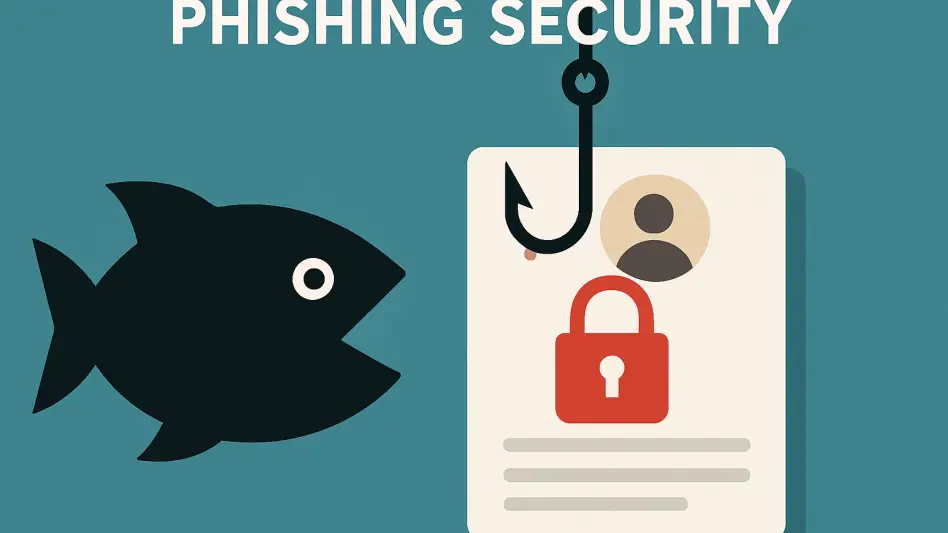Imagine opening an email that appears to come from a trusted colleague, directing you to a familiar document-sharing platform, only to find yourself locked out of your corporate account moments later. This scenario is becoming alarmingly common with the rise of a sophisticated phishing kit known as Salty2FA, which bypasses multi-factor authentication (MFA) with chilling precision. As cyber threats evolve to exploit both technology and human trust, understanding this new frontier in phishing is critical for organizations across industries. This roundup gathers insights, strategies, and warnings from various cybersecurity experts to dissect how Salty2FA operates and what can be done to counter its deceptive tactics. The goal is to provide a comprehensive view of this emerging danger and arm businesses with the knowledge to strengthen their defenses.
Exploring Salty2FA Game-Changer in Phishing Attacks
The emergence of Salty2FA marks a significant shift in the landscape of cybercrime, as it targets the very security mechanisms designed to protect users. Experts across the field describe this phishing kit as a pioneer in what some call “Phishing 2.0,” due to its ability to replicate trusted login pages and simulate MFA processes. This level of sophistication raises alarms about the vulnerability of even well-protected systems in sectors like healthcare and finance.
Differing perspectives highlight the scale of the challenge. Some cybersecurity analysts emphasize the kit’s tailored approach, noting how it undermines foundational security by mimicking corporate branding with precision. Others point out that its impact spans beyond individual organizations, signaling a broader trend of attacks that exploit user trust. This consensus underscores an urgent need for adaptive strategies to combat such advanced threats.
A key takeaway from these discussions is the necessity of staying ahead of evolving tactics. Industry leaders stress that traditional security tools often fall short against such innovative attacks, pushing for a deeper understanding of Salty2FA’s mechanisms. Their collective insights set the stage for a detailed examination of how this phishing kit operates and why it poses such a formidable risk.
Breaking Down the Tactics: How Salty2FA Outsmarts Security
Mastering Deception with Dynamic Branding
One of the most discussed aspects of Salty2FA among cybersecurity professionals is its use of dynamic corporate branding to create fraudulent login pages. Experts note that the kit customizes these pages to mirror a victim’s organization by incorporating specific logos, colors, and styling, resulting in near-identical replicas of legitimate portals. This precision makes it incredibly difficult for users to spot discrepancies.
Feedback from industry observers reveals that this tactic disproportionately affects sectors like technology and energy, where branding consistency is key to user trust. The tailored nature of these attacks demonstrates a high level of social engineering, exploiting familiarity to deceive even cautious individuals. Such observations raise doubts about the effectiveness of relying solely on user vigilance to prevent breaches.
A recurring theme in these analyses is the challenge of detection. Specialists argue that the visual accuracy of these fake pages often bypasses basic security training, as the differences are subtle and context-specific. This insight points to a pressing need for automated tools that can identify anomalies beyond what the human eye can discern.
Tricking Users with MFA Simulation
Another focal point in expert discussions is Salty2FA’s ability to simulate multiple MFA methods, including SMS codes and authenticator apps. Cybersecurity researchers highlight how this kit replicates the authentication experience so convincingly that users willingly provide sensitive credentials, believing they are interacting with a secure system. This exploitation of trust is a core component of the attack.
Insights from various sources indicate that this tactic poses severe risks to industries relying heavily on digital access, such as finance and healthcare. The simulation of security protocols creates a false sense of safety, allowing attackers to harvest data with ease. Real-world examples shared by analysts show how even tech-savvy users can fall victim to these meticulously crafted deceptions.
A critical concern raised by professionals is the disparity in MFA implementations across organizations. Some note that weaker forms of authentication, like one-time passwords, are particularly vulnerable to such phishing schemes. This gap between perceived and actual security calls for a reevaluation of how MFA is deployed and reinforced within corporate environments.
Evading Detection with Rotating Infrastructure
Experts are also vocal about Salty2FA’s innovative use of rotating infrastructure to avoid detection. Many describe how the kit employs session-based subdomains, creating unique URLs for each victim, which complicates efforts to track and block malicious activity. Combined with tools like Cloudflare Turnstile captchas, these tactics effectively hinder automated security systems.
Further analysis reveals that such methods are paired with code obfuscation and anti-debugging techniques, making it challenging for researchers to analyze the threat. Cybersecurity teams express frustration over how these barriers slow down response times, allowing attackers to operate with relative impunity. This adaptability showcases the attackers’ deep understanding of conventional defense mechanisms.
A shared concern among specialists is the inadequacy of traditional tools against such dynamic approaches. Many argue that the rapid evolution of infrastructure tactics outpaces current detection capabilities, leaving organizations exposed to future vulnerabilities. This perspective drives home the importance of developing more agile and predictive security solutions.
Exploiting Trust Through Legitimate Platforms
The use of trusted platforms to host malicious content is another area of focus for cybersecurity experts. Salty2FA often leverages services like Aha.io to create fake document-sharing pages, capitalizing on user familiarity with legitimate tools to initiate attacks. Analysts point out that this strategy significantly lowers suspicion among targets.
Comparisons to other phishing campaigns reveal a growing trend of exploiting reputable services for illicit purposes. Some professionals caution that existing detection tools struggle to flag activity on trusted domains, as they are often whitelisted by default. This blind spot creates an opportunity for attackers to operate under the radar, amplifying the attack’s reach.
Speculation among industry voices suggests that such tactics could inspire a wider misuse of legitimate platforms in future campaigns. This concern prompts calls for a reevaluation of how trust is established online, with many advocating for stricter monitoring of third-party services. The consensus is that addressing this issue requires a fundamental shift in how digital ecosystems are secured.
Key Takeaways: Building Stronger Defenses Against Sophisticated Threats
Drawing from a variety of expert opinions, it’s clear that Salty2FA’s multi-layered approach—from tailored branding to MFA simulation and detection evasion—represents a formidable challenge. Cybersecurity leaders agree that its ability to adapt and exploit trust demands a proactive response. Their insights converge on the need for a multi-faceted defense strategy to counter such advanced phishing kits.
Recommendations often center on integrating machine-learning tools capable of detecting behavioral anomalies, as opposed to relying on static rules. Additionally, there is a strong emphasis on enhancing user training to recognize subtle signs of sophisticated phishing attempts, even when they appear legitimate. These actionable steps aim to bridge the gap between technology and human awareness.
Practical guidance also includes a thorough assessment of current MFA implementations within organizations. Experts advise prioritizing stronger authentication methods that are less susceptible to simulation, alongside regular audits of security protocols. This combination of technical upgrades and ongoing education is seen as essential to fortifying barriers against evolving cyber threats.
The Wider Implications: Salty2FA as a Wake-Up Call for Cybersecurity
Looking back at the discussions surrounding Salty2FA, it becomes evident that this phishing kit is not just a singular threat but a harbinger of more complex cyberattacks targeting both technological and human weaknesses. Experts across the board recognize its role in highlighting the limitations of existing security frameworks during a time of escalating browser-based phishing attempts. Their collective analysis paints a sobering picture of the challenges faced.
Reflecting on the insights gathered, a critical next step that emerges is the adoption of innovative technologies paired with continuous user education. Organizations are encouraged to explore predictive analytics and anomaly detection systems to stay ahead of deceptive tactics. Additionally, fostering a culture of skepticism toward unsolicited digital interactions is deemed vital.
Beyond immediate solutions, the conversations point toward sustained collaboration within the cybersecurity community to share intelligence on emerging threats. Building robust partnerships and investing in research for next-generation defenses are seen as essential actions. These steps aim to ensure that the lessons learned from Salty2FA pave the way for a more resilient digital future.








